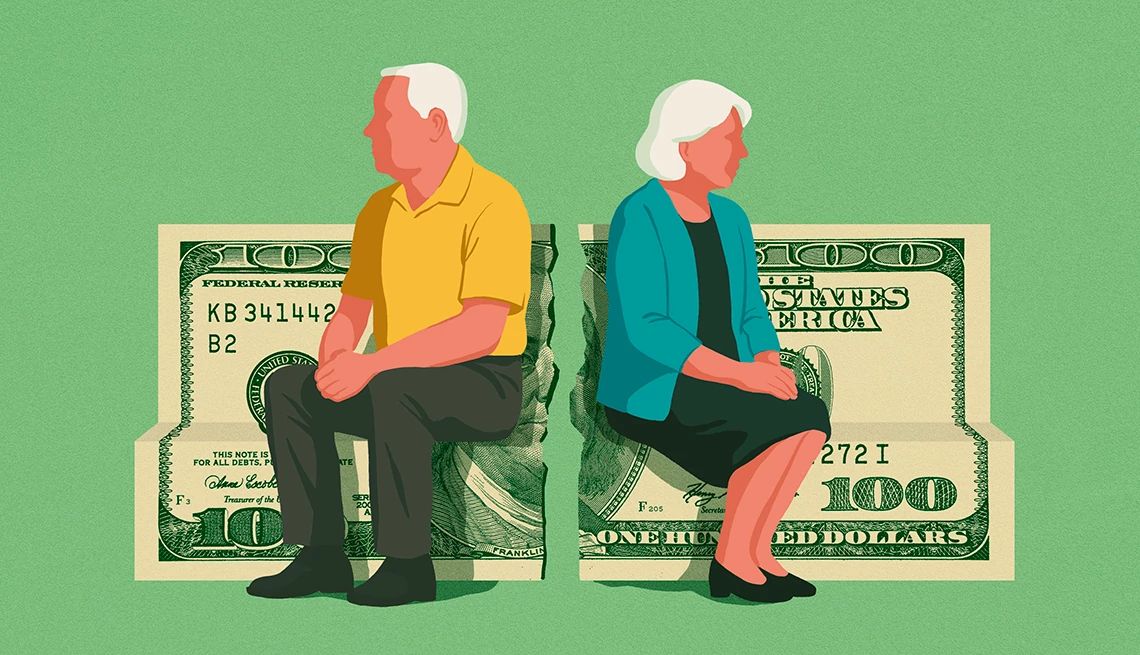AARP Hearing Center


As couples get closer to retirement, it’s not enough to revel in how much they’ve saved in their 401(k)s, talk wistfully about leaving the office behind, and daydream about overseas trips and beach lounging.
Merging competing retirement ambitions and disparate investment portfolios into one plan that keeps both spouses happy can be a big challenge. It will be all the more difficult if you and your partner unwittingly make one or more of these eight common mistakes while preparing for your golden years.
1. Not talking about finances enough
When it comes to discussing money, nearly 9 in 10 couples feel they communicate well with each other, and 6 in 10 say they share the same retirement vision, according to Fidelity Investments’ 2024 Couples & Money Study.
But those rosy views don’t always align with reality. As well as couples might think they communicate on financial matters, more than a third of respondents in the Fidelity survey didn’t even know how much their significant other earned. And with almost 1 in 4 couples admitting that money is their greatest relationship challenge and 27 percent of respondents finding their partner’s money habits frustrating, it’s no wonder many avoid conversations they fear could morph into arguments.
Viewing conflicts as solvable rather than perpetual can set the stage for productive conversations around retirement savings and goals. Sean Fletcher, a certified financial planner and founder of Prospettiva Financial in San Francisco, suggests the “little and often” approach — instead of holding an hours-long discussion where you pull out every single bank, investment, credit card and loan statement, set aside 10 minutes for a money chat as part of a date night at least once a month.
“Keep it short and focus on one account or topic at a time,” Fletcher says. “Decide ahead of time how you’re going to use those minutes, have the conversation, and then do something fun” to reward yourselves.
Once you’ve established a regular cadence, he suggests gradually extending the money part of the date by expanding the range of topics you discuss.
2. Leaving money decisions to one partner
About 45 percent of couples report that one partner takes the lead when making retirement investing and planning decisions, according to the Fidelity study. That can be problematic, considering more than half of couples disagree about how much they need to save to retire and 47 percent say they have different risk tolerances when it comes to investments.
Both partners don’t need to be involved in every single day-to-day decision, says Carla Adams, founder of Ametrine Wealth in Lake Orion, Michigan, but both should “know where the accounts are and understand big-picture how to manage the finances.”
Furthermore, Fidelity found that couples who make money decisions together are more likely to feel confident in each other’s ability to assume responsibility for retirement planning and other long-term goals than couples in which one partner handles such decisions independently.
Moreover, women who make decisions on investing, insurance and retirement alongside their partners report greater confidence in their future and less anxiety about money, according to a study from UBS.



































































More From AARP
How Retirees Can Get Financially Fit
Here’s how to bulk up your emergency fund, shed debt and accomplish other money power moves
Navigating a Split Retirement: 5 Essential Steps
Tips for couples facing financial, emotional challenges when retiring at different times
What to Stop Buying Now If You’re Retired
It may be time to reconsider all the stuff you’ve been spending money on for years.